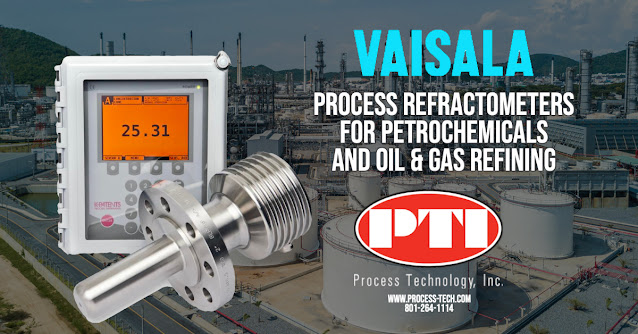Vaisala K PATENTS® Process Refractometers provide precise in-line measurements of refractive index, concentration, and density that enhance oil and gas refining and petrochemical processes such as sulfuric acid alkylation, amine gas treatment, gas dehydration, and lubricating oil manufacturing.
Measurement Theory
Critical angle measurement is the measuring method. The refractometer has three primary parts: a light source, a prism, and an image detector.
The light source sends light rays at different angles to the prism and process interface. Rays with a steep angle are partly reflected to the image detector and partially refracted to the process. Rays with a low angle reflect totally to the detector. The angle from which the total reflection starts is called the critical angle.
The CCD camera detects bright and dark fields, which correspond to partially and fully reflected light. The critical angle, a function of the refractive index that corresponds with the concentration of the solution, determines where the boundary between the brilliant and dark region is.
An internal temperature sensor measures the temperature T during the liquid contact process. The sensor transforms the temperature T and refractive index nD into concentration units. Refractometers made by Vaisala K-PATENTS may display data on various scales, including Brix, liquid density, and concentration by weight. The diagnostics software guarantees the accuracy of the measurement.
